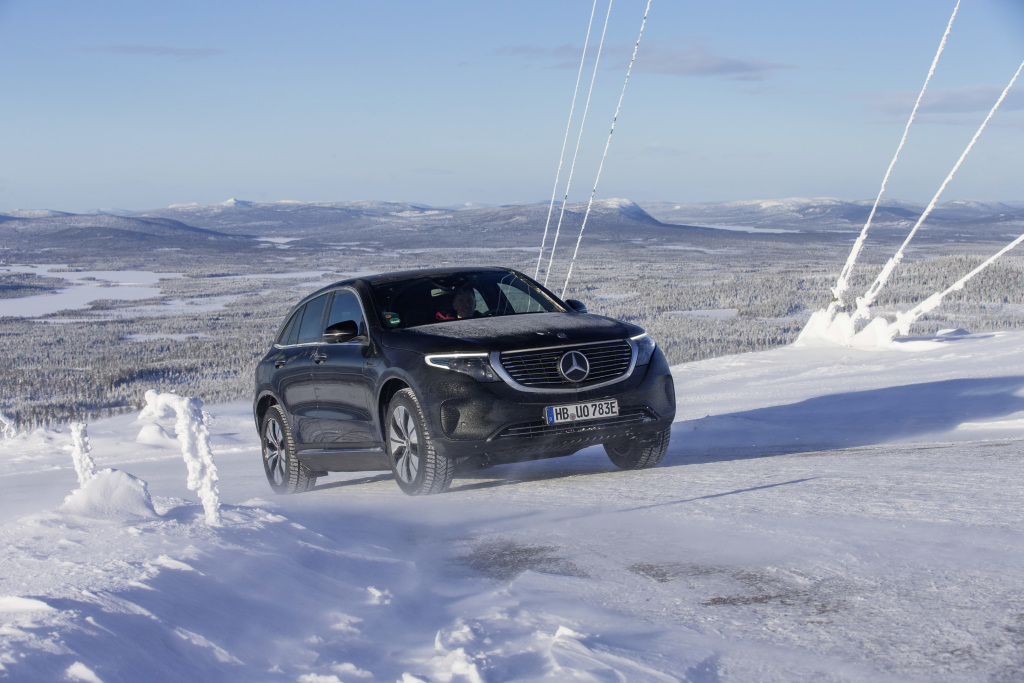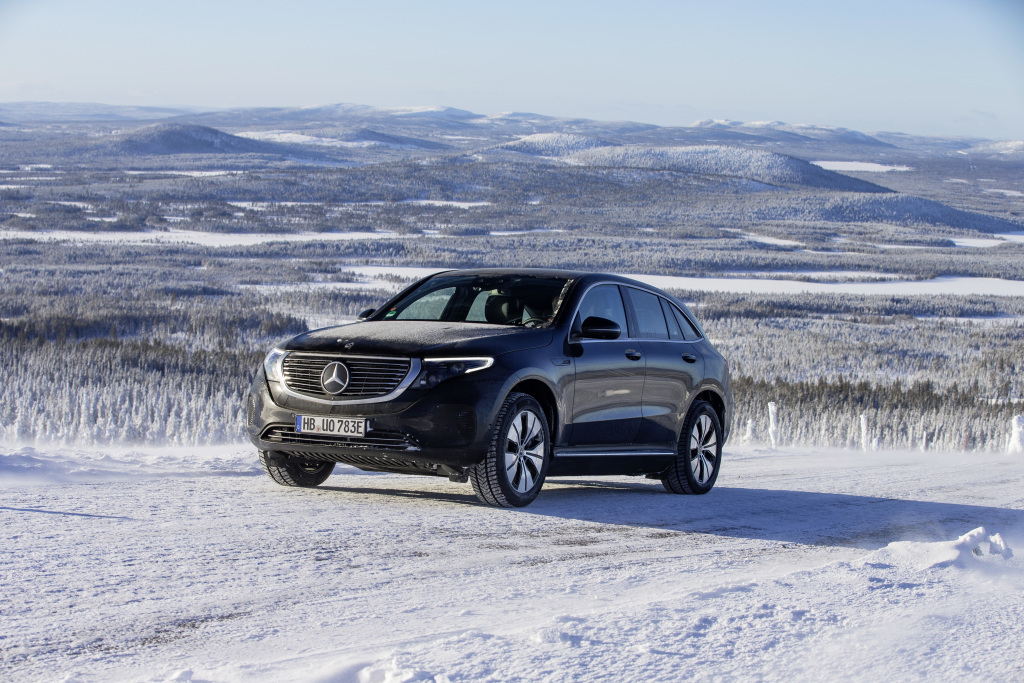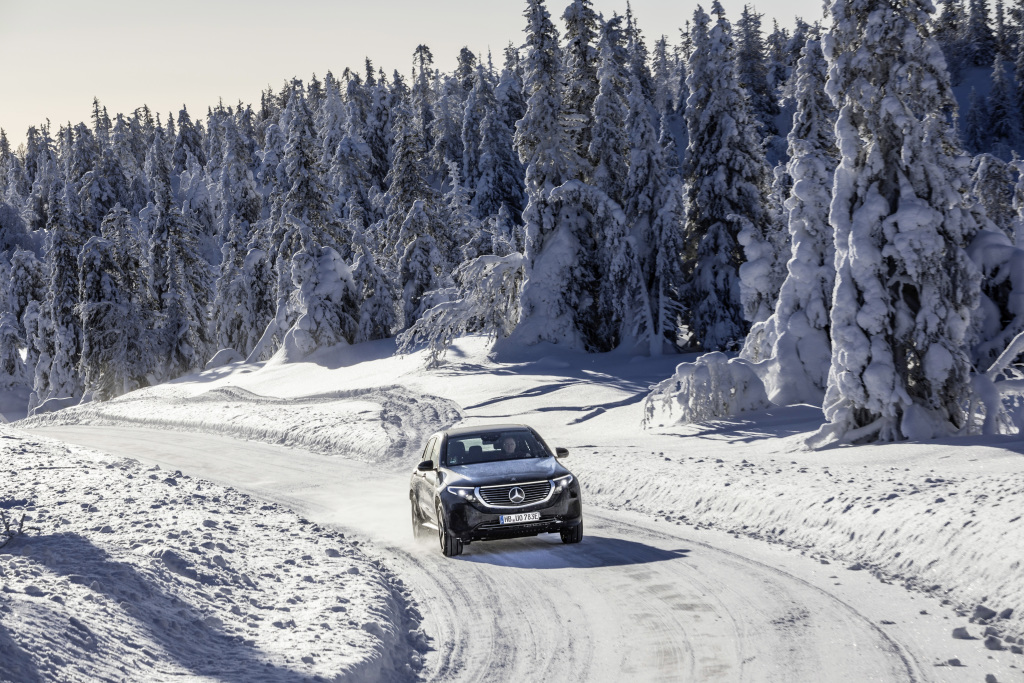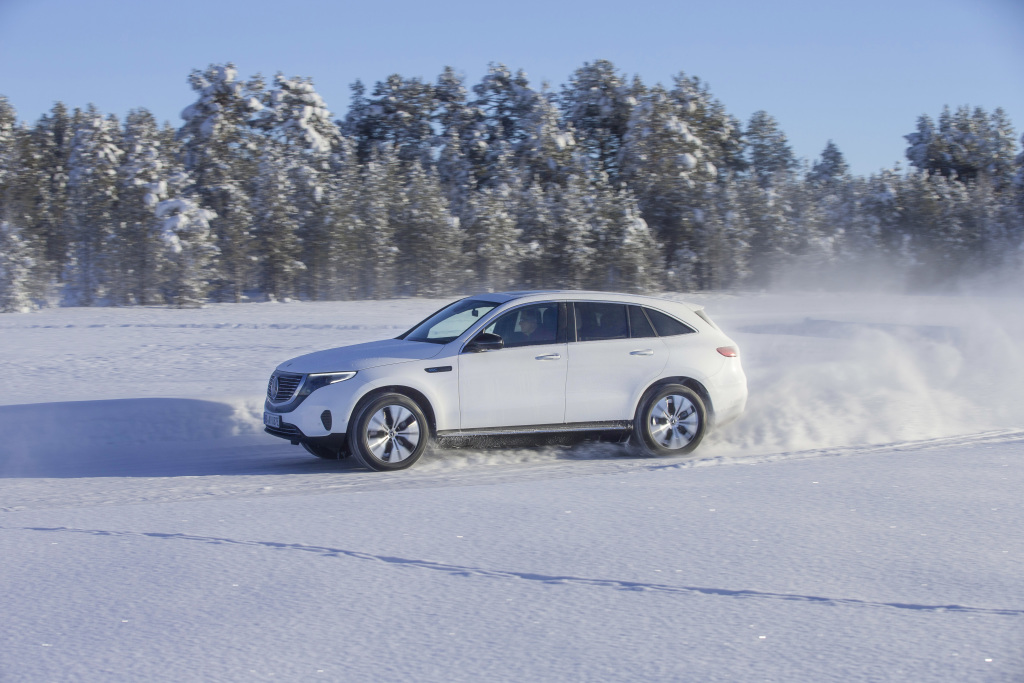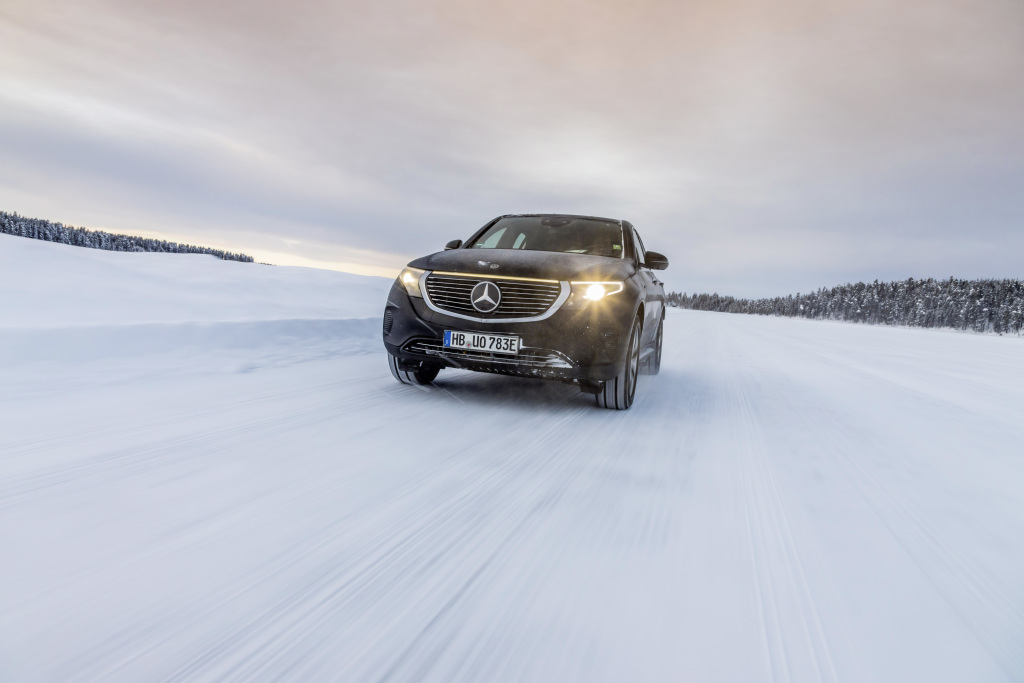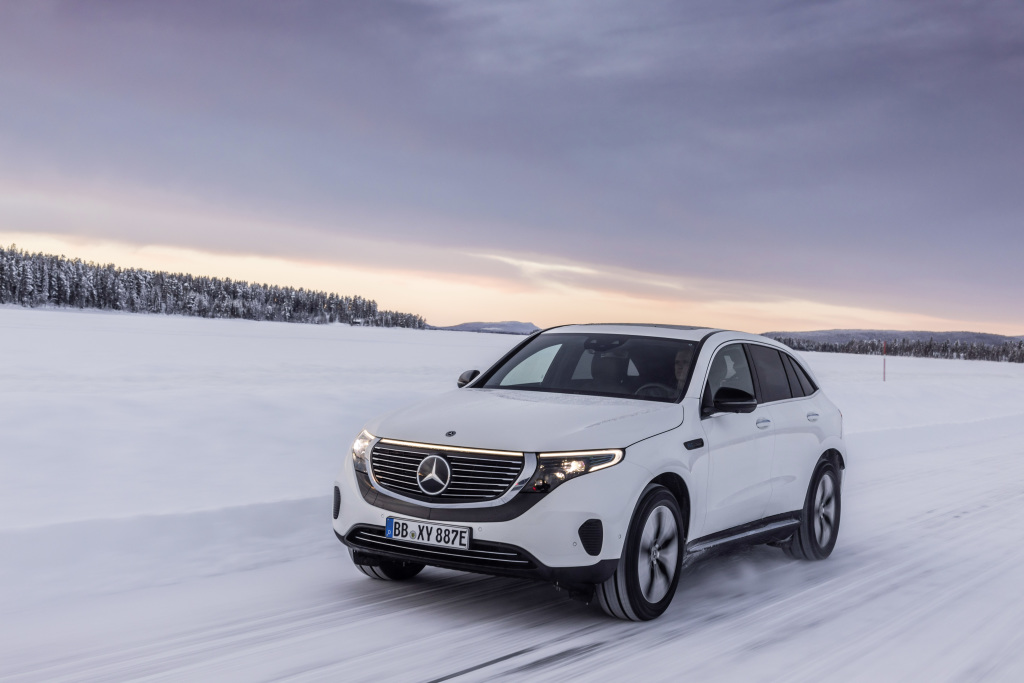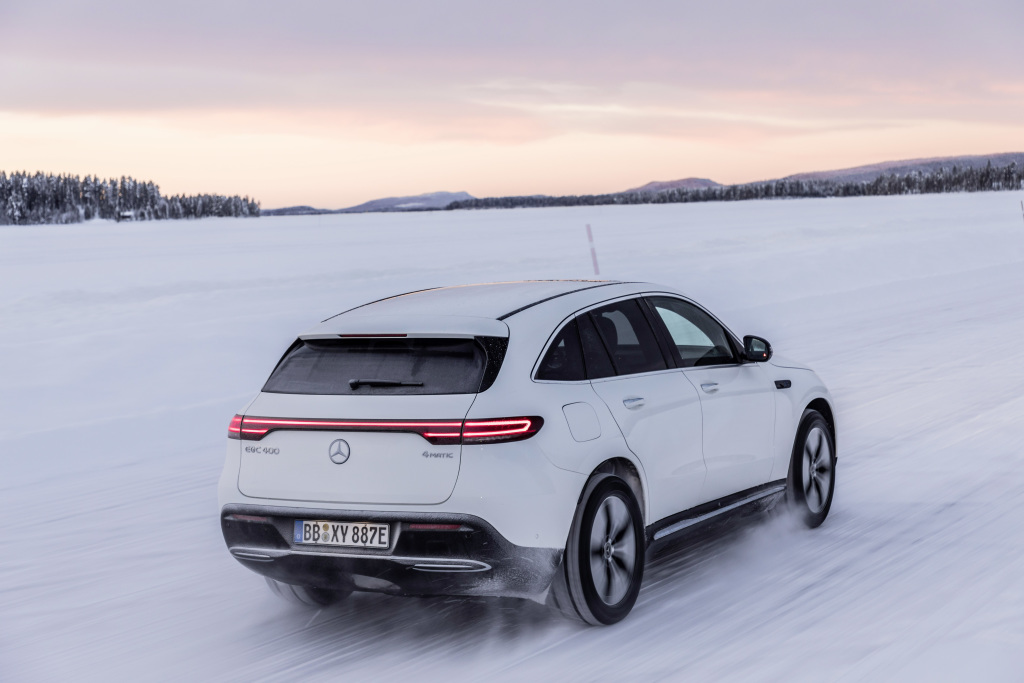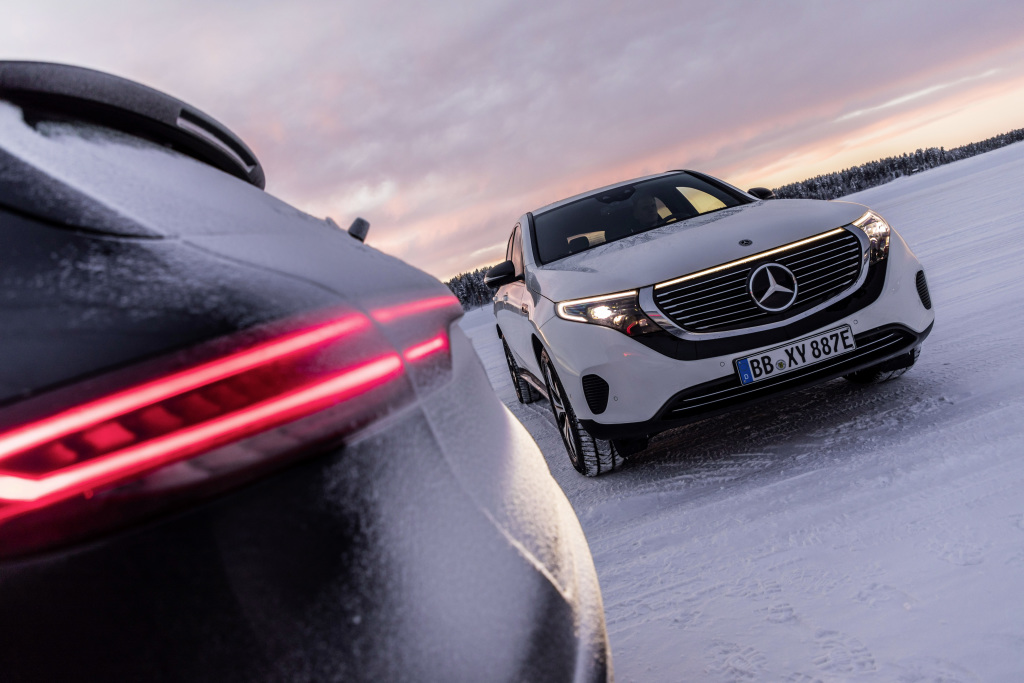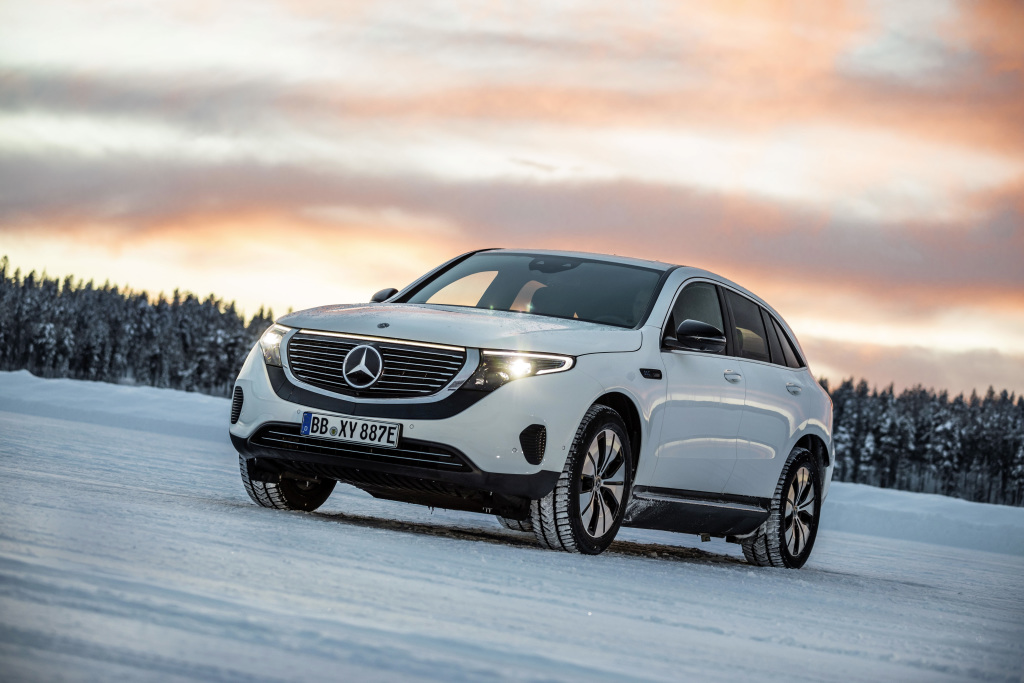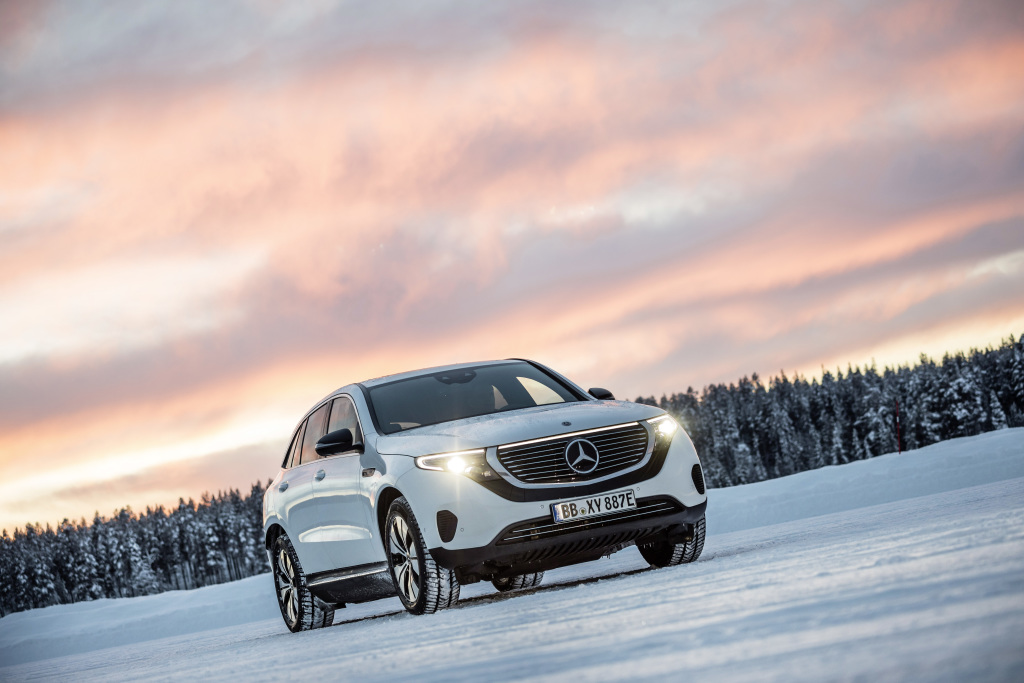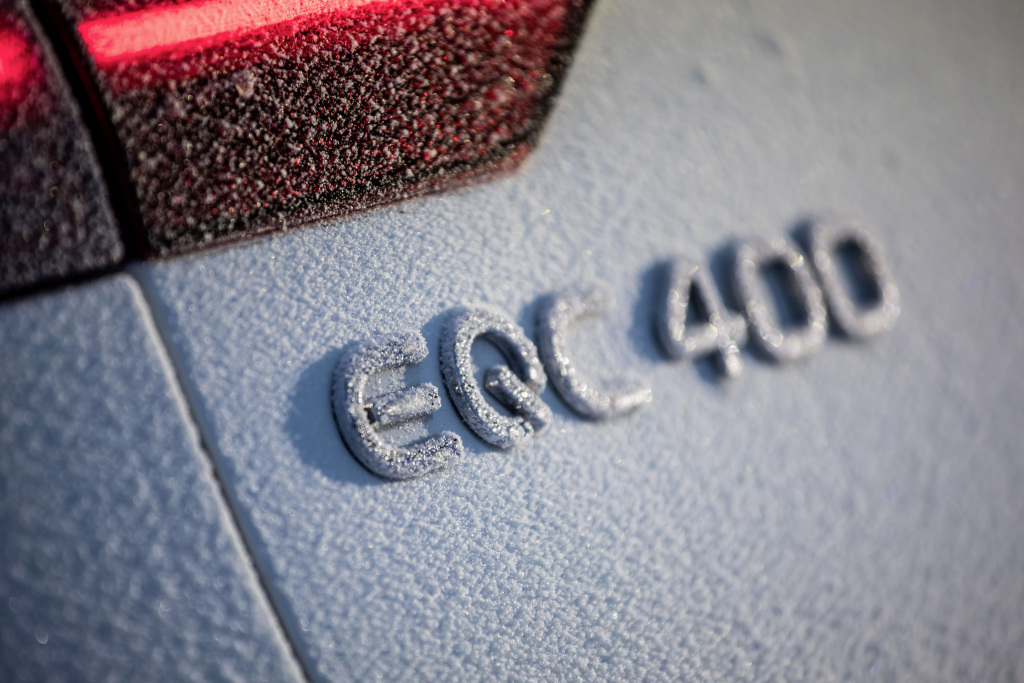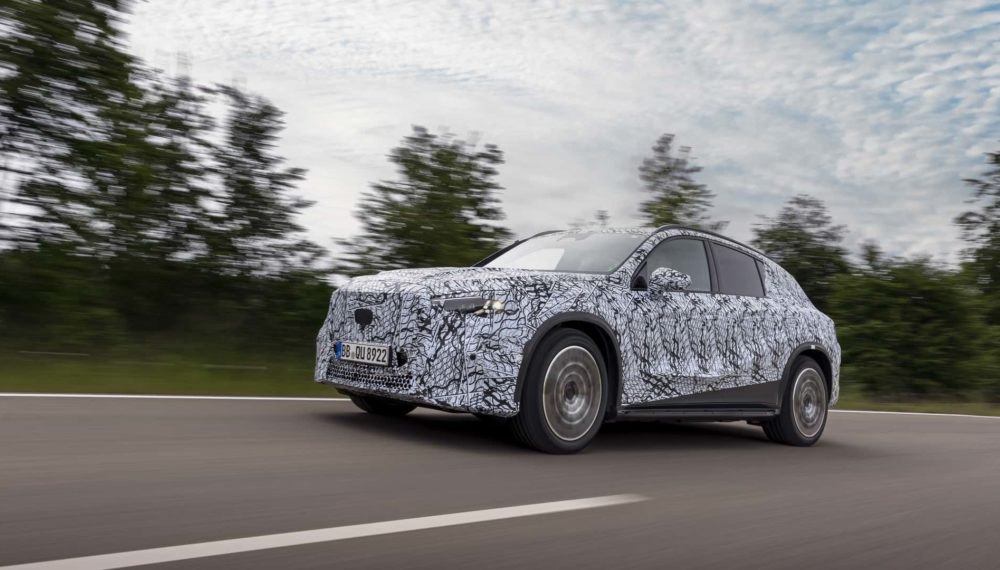After digital tests and benchtests, the 200 or so prototypes and pre-series models of the EQC cover several million kilometres on four continents. The test program includes over 500 individual tests in Europe, North America, Asia and Africa. During the course of three winters and three summers, the EQC is subjected to temperatures from minus 31° F up to over plus 122° Fahrenheit. These tests are conducted for final verification before customer deliveries of the EQC commence.
Winter trials
Testing is carried out in Arjeplog in Lapland, on the roads and on specially prepared test tracks. In fact testing starts earlier than this: the components are optimized in iteration cycles in Sindelfingen, and the latest variants are installed in the vehicles.
The winter trials follow a strict timetable: each day begins with an early morning discussion during which the day’s activities are defined. In the evening there is a final discussion with feedback from the test team, the results for the day and planning of activities for the subsequent days and weeks.
In contrast to the previous winter trials of the EQC, only the final details are optimized and verified this time. This includes fine-tuning and testing of aspects that present a particular challenge in electric vehicles.
- Cold-starting characteristics and thermal comfort: These must be coordinated as well as possible, and are therefore thoroughly tested. The available power when cold-starting with a cold battery must be sufficient for vehicle operation. The developers examine the warm-up characteristics of the electric car, as in contrast to conventional combustion engines, no waste heat is available for use. Also tested is the operation of the pre-entry climatization function, which ensures very fast and efficient warming of the vehicle before a journey begins. The operating strategy for thermal comfort is thoroughly tested at low temperatures, to achieve the optimum efficiency and comfort.
- Pre-entry climatization – in this case warming the vehicle interior, steering wheel, rear window and, depending on choice, the driver’s seat or all the seats before starting off – must work perfectly. Numerous test drives are carried out so as to assess the effects on operating range as well as possible. To make the range as long as possible, it is advisable to charge the vehicle at a charging station so that the energy needed for pre-entry climatization comes from the power grid, and not from the high-voltage battery.
- Range in customer operation: Naturally this should also be as good as possible in cold conditions. The engineers therefore examine how precise the range calculations are. They also analyze how much range is sacrificed when the interior is heated during a journey. In this connection additional tests are carried out to show how rapidly the interior cools down during short stops, e.g. shopping trips, and how much energy is then needed to compensate the heat loss. It is always more energy-efficient to lower the interior temperature and operate the seat heating as required.
- Negative effects of ice and snow:
- Aspects examined by the test team include e.g. the filler neck compartment seals during operation. Different design patterns are assessed and selected.
- The engineers also examen how e.g. the motor compartment and axles react to penetrating ice or snow. The assemblies should be adequately protected by the aerodynamically optimized underbody panels and the measures taken to exclude snow from the exposed areas of the axles.
- The operating efficiency of the sensors in icy and snowy conditions is also examined. Tests are carried out to establish whether and how the wheel sensors work when they are iced up. In this connection the development team also examines the functionality of the integrated heating system, and whether Active Distance Assist DISTRONIC intervenes as normal. The aim in all cases is to ensure reliability in unfavorable conditions.
- Interaction between the electric powertrain and ESP® intervention: Unlike conventionally powered vehicles, the EQC has the advantage that in addition to the familiar ESP, the electric powertrains (eATS) at the front and rear axle can contribute to handling stability. Their interaction is therefore thoroughly tested and optimized for maximum handling stability.
Thermal management & charging in the cold
- The test center in Sweden is equipped with all types of charging connectors, from domestic sockets to AC wallboxes and DC chargers. Drivers needing to cover long distances in the winter should charge the EQC at a wallbox and use energy from the power grid for pre-entry climatization.
- Important to know: At very low temperatures the high-voltage battery absorbs less power, as the chemical processes are slower than usual. During the charging process, a battery heating system known as a PTC (Positive Temperature Coefficient Thermistor) ensures that the battery remains in the best possible performance and efficiency range. To this end the coolant of the high-voltage battery is warmed as if by an immersion heater.
- However, the performance of such PTCs depends on the inlet temperature of the coolant. The advantage is that the component itself prevents overheating, making additional protection systems unnecessary. This is because the ceramic PTC components have a very low electrical resistance at low temperatures, allowing a high flow of current for high heating output.
- Ideally the vehicle interior should also be prewarmed during the charging process. This means that EQC drivers have no need to scrape iced-up windows or get into an ice-cold car. It also extends operating range, as the energy required from the high-voltage battery can be greatly reduced in this way. Furthermore, the EQC also uses the waste heat from the battery as a source of energy. Pre-entry climatization can be controlled via the multimedia system MBUX – Mercedes-Benz User Experience or the Mercedes me App.
- The pre-entry climatization system uses target values. When the driver enters his/her departure time, the EQC is climatized to the preset temperature before the journey begins. The driver can do this individually for each journey or stretch, or by setting a weekly profile.
Traction, dynamic handling and recuperation
- To ensure maximum traction and handling stability even on snow and ice, the operating strategy detects spinning wheels and adapts the all-wheel torque distribution accordingly.
- Thanks to the interaction between the two independently actuated electric motors and the three-stage ESP, the EQC is considerably more stable and agile than conventional vehicles even in winter.
- When traction is lost, the drive torque can be adjusted with the help of micro slip control within factions of a second, and redistributed between the axles by ESP – an action similar to that of conventional all-wheel drive with a center differential lock.
- On downhill gradients the engineers test the recuperation performance of the EQC in Sweden. An icy road provides considerably less surface adhesion than a dry one. It is therefore necessary to configure ESP very precisely. It must intervene in an emergency, but also allow the desired recuperation when driving normally.
Key facts about the EQC:
- The EQC is the first Mercedes-Benz model under the new product and technology brand EQ. At the same time the EQC is symbolic of a new era in mobility at Daimler.
- Thanks to the newly developed drive system with a compact electric powertrain (eATS) at each axle, the EQC has the driving characteristics of an all-wheel drive. The front electric motor is configured for best possible efficiency in the low to medium load range, while the rear motor provides dynamism.
- The 80 kWh (NEDC) lithium-ion battery supplies the energy and can achieve an electric operating range of over 450 km (acc. to NEDC, provisional figure) .
- Owing to its muscular proportions, the EQC is categorized as a crossover SUV. The stretched roofline and the window pattern with a low waistline and a coupé-like roof taper at the rear visually position it between an SUV and an SUV coupé.
- The assistance system ECO Assistant gives the driver comprehensive support when driving predictively: by informing him/her when the gas pedal can be released, e.g. because there is a speed limit ahead, and with functions such as gliding and specific recuperation control.

Shortly before the market launch, the Mercedes-Benz EQC travels one last time on Sweden’s snow slopes. At this winter test in Arjeplog, Sweden, the Mercedes-Benz engineers pay special attention to the thermal management of the battery and the interior, charging in the cold and to driving safety, traction and recuperation on ice and snow.
